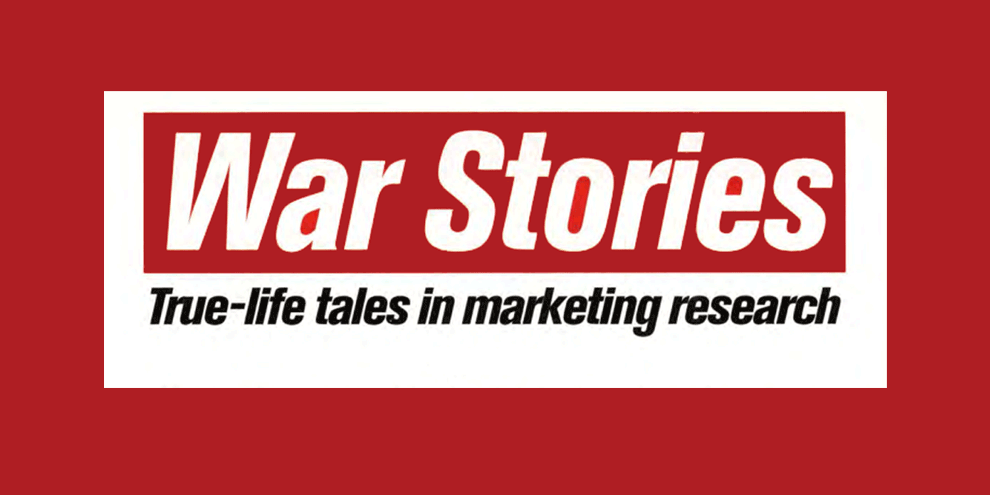Editor’s note: "War Stories" is a regular feature in which Art Shulman, president of Shulman Research, Van Nuys, Calif., presents humorous stories of life in the research trenches.
Some columns ago we reported on how people tend to use idiomatic expressions that, unwittingly, are connected with the research subject matter. A few weeks ago I scheduled field services to conduct interviews for a large scale taste test on chili. When informed they’d been chosen to perform the work, several of them (not just one) exclaimed, "Cool!"
Moderator Saul Cohen of Saul Cohen & Associates tells about a female participant in a focus group on luncheon meats who, when asked, "Where do you think bologna comes from?" convincingly stated that it came from "the bologna part of the cow."
Market researchers must have backbone! Gerald Linda of Gerald Linda & Associates tells about a moderator who got so fed up with her client coming into the room with messages that she locked the door. When the client knocked and then pounded to enter, she just told the group to ignore it. How many of you would have done the same?
Sometimes market research serves another purpose than pure research. Linda cites a focus group where a man and woman who’d never met before began flirting and really hit it off. I wonder if in books and newspapers directed at singles, when they recommend ways to meet people, they’ll add "attend a focus group" to the usual advice to "join a church or social group."
Linda was mystified once when a respondent, upon being told the group was being videotaped, hid his face and fled the room. Pity! Fugitives from justice have opinions too! I guess the guy didn’t realize he was representing thousands of other fugitives in the population!
Another time, Linda reports, one member of the "dissatisfied" group recruited for a focus group tried to get other group members to sign an affidavit. It turns out he was in the midst of a lawsuit against the client.
Ken Hollander of Kenneth Hollander Associates remembers the time his firm was retained by a very large computer hardware manufacturer to conduct user research. The client seemed extremely concerned about maintaining anonymity. His firm had to sign a non-disclosure agreement, and was visited by a member of the client’ s security department, who not only checked locked closets and files, but looked into their windows with high-powered binoculars from the roof of an adjoining building to ensure that no competitive spy could read materials on the desktops.
Having passed these stringent tests, Hollander’s firm proceeded to brief the field service, stressing the need for extremely high security. The study designed was double-blinded so that no one (including the field service) would know the identity of the company sponsoring the research.
Shortly thereafter a delivery truck pulled up to the field service with the client’ s name and logo emblazoned on its sides. Two of its employees, wearing company uniforms, then entered the facility to deliver, in clearly marked boxes, the hardware to be tested.
So much for the security of the client’s identity.
